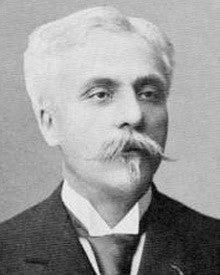
(1845 - 1924)
Gabriel Faure was born May 12, 1845, in Pamires, Mid-Pyrenees, France. From the age of 9 he studied piano and organ with Camille Saint-Saëns at the Ecole Niedermeyer. In 1865 Faure was awarded first prize for composition, for his 'Cantique de Jean Racine'. In 1870 he served in the army during the Franco-Prussian war and during the Paris Commune he was a music teacher in Switzerland. Faure became a regular at the salon of Camille Saint-Saëns and the salon of Pauline Garcia-Viardot. There he met many prominent Parisian intellectuals: writers Gustave Flaubert and Ivan Turgenev, composers Hector Berlioz and Georges Bizet. He married Marie Frement in 1883 and the couple had two sons. After ten years of hardship, Faure finally got promoted to the government position of the Inspector of Music Conservatoires in the French provinces. In 1896 he became chief organist at the Eglise de la Madeleine. He also replaced Jules Massenet as professor of composition at the Conservatoire de Paris. His students there included Maurice Ravel, Nadia Boulanger, Georges Enesco, and Charles Koechlin, who later orchestrated Faure's popular suite 'Pelleas et Melisande'. In 1890s Faure wrote piano duet 'Dolly Suite' and a vocal piece 'La bonne chanson' for Emma Bardac, the wife of Claude Debussy.
Gabriel Faure Composition Timpani and Percussion Requirements
Dolly Suite
Timpani + 4 percussion
1) tambourine, 2) clash cymbals, suspended cymbal, 3) triangle, 4 orchestral bass drum
__________________________________________________________________________________
La Fete Etrange
Timpani + 1 percussion
Orchestral bass drum, tambourine, triangle, suspended cymbal, clash cymbals
__________________________________________________________________________________
Shylock Suite
Timpani + 1 percussion
Triangle
__________________________________________________________________________________
